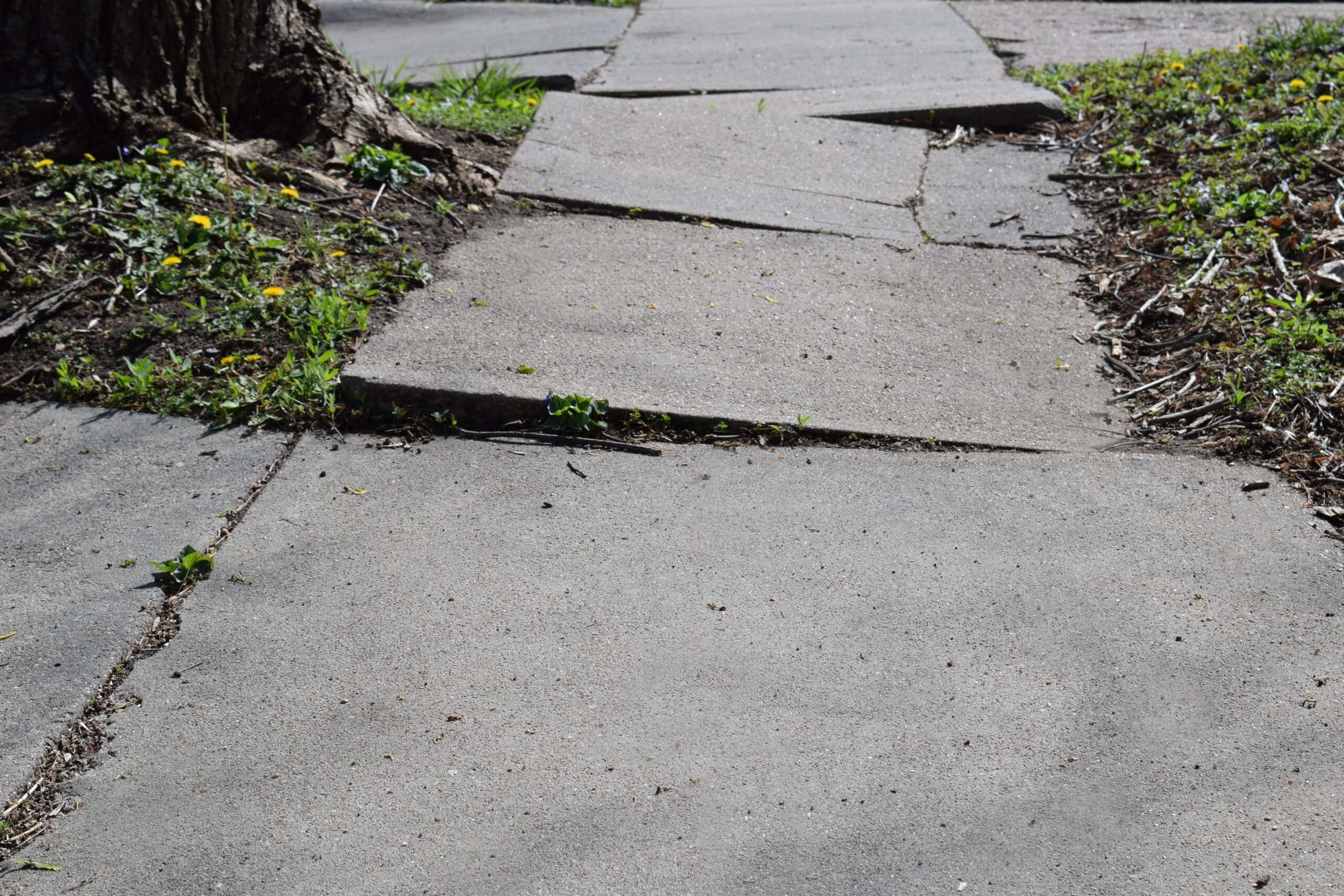Why it pays to fix damaged footpaths
Walking down the street, we often take for granted the solid ground beneath our feet. However, when damaged footpaths become a common occurrence on our streets, the seemingly simple act of walking can turn into a hazardous endeavour. Not only do these neglected footpaths pose a significant risk to pedestrians, but they also contribute to a decline in the overall quality of our urban environments. This blog will discuss the importance of functioning footpaths and the benefits of fixing damaged footpaths for the safety and well-being of our communities.
1. Preventing Accidents and Injuries
Damaged footpaths are notorious for causing accidents and injuries. Uneven surfaces, cracks, potholes and loose paving stones can all become potential tripping hazards, especially for the elderly, children, and individuals with mobility challenges. Trips and falls resulting from damaged footpaths can range from painful but minor injuries, to major injuries like broken bones, or serious head or back injuries. Individuals who suffer from these injuries may wish to sue the responsible party for negligence. However, certain provisions within the Civil Liability Act 2002 (NSW) offer a local council or government tasked with footpath maintenance significant protection under the law. These provisions specifically restrict the injured party's capacity to seek compensation. This puts the injured at a severe disadvantage, especially when the cause of the accident originates from the lack of routine footpath maintenance.
2. Enhancing Accessibility
Footpaths play a vital role in ensuring accessibility for all members of society. They enable individuals to move around safely, whether on foot or using assistive devices such as wheelchairs or walkers. When footpaths are in disrepair, they become impassable or challenging to navigate for people with disabilities, limiting their freedom and independence. By investing in the repair and maintenance of footpaths, we create a more inclusive environment that fosters equal access for everyone.
3. Promoting Active Lifestyles
The walkability of a city is an essential aspect of creating healthy and active communities. Well-maintained footpaths encourage people to walk, run, cycle, and engage in outdoor activities. When footpaths are neglected, people may be deterred from using them due to safety concerns. By prioritising the repair of footpaths, we encourage physical activity and promote healthier lifestyles.
4. Revitalising Urban Spaces
Footpaths are integral components of urban landscapes, contributing to the overall aesthetics and appeal of a city. Neglected footpaths not only detract from the visual appeal but also give locals the impression that their community is being neglected. By investing in footpath repairs, cities and towns can revitalise their urban spaces, making them more inviting for both residents and visitors alike.
5. Long-term Cost Savings
While investing in footpath repairs may require an initial financial outlay, it can result in long-term cost savings. Neglected footpaths tend to deteriorate further over time, requiring more extensive and costly repairs. By proactively addressing footpath maintenance, governments and municipalities can save money in the long run while ensuring the safety and well-being of their residents.
How can we help?
At Pavement Management Services, we conduct footpath condition assessments using the Footpath Rover to identify areas where maintenance is needed and develop a detailed program of works to manage expected maintenance costs. Our quadbike collects accurate data efficiently and effectively so that asset owners can make data driven decisions regarding how to manage footpath assets. Click on the button below to download the free Footpath Rover brochure.
The Footpath Rover is equipped with 4xHD (1080p) cameras that incorporates lense angles of 70-90 degrees which are able to be repositioned to capture footpaths, driveways and signs.
To conclude, the trip hazards caused by damaged footpaths are not merely inconveniences but pose genuine risks to public safety. Repairing footpaths is a crucial responsibility that should be embraced by communities, governments, and relevant authorities. By investing in footpath maintenance, we promote pedestrian safety, enhance accessibility, foster active lifestyles, revitalise urban spaces, and ensure long-term cost savings.


